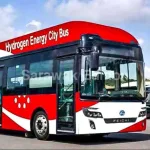The Carbon Footprint of Electric Vehicles

Balancing Progress and Responsibility
eyesonmalaysia
As we accelerate toward a cleaner, more sustainable future, electric vehicles (EVs) play a pivotal role in reducing carbon emissions. However, understanding their environmental impact requires a nuanced perspective. Let’s delve into the various facets of an EV’s carbon footprint and explore potential solutions.
1. Production: The Birth Pangs of Clean Mobility
Building any car, whether electric or gasoline-powered, leaves a carbon footprint. Yet, the birth of an EV is more energy-intensive due to lithium-ion battery production. These batteries, essential for EVs, require mining, processing, and assembly, resulting in significant emissions. For instance, creating a single battery pack for an electric sedan can emit between 2.5 and 16 metric tons of CO21. The environmental costs extend globally, from mining sites to assembly plants, emphasizing the need for cleaner energy sources during production.
2. Driving: The Road to Redemption

Once on the road, EVs shine. Their tailpipe-free operation significantly reduces greenhouse gas emissions compared to gasoline-powered counterparts. Most studies conclude that despite the initial production footprint, EVs become more environmentally friendly over their lifetime. The tipping point varies by vehicle and driving conditions, but it’s heartening to know that EVs eventually outperform their fossil-fueled counterparts1.
3. Lithium Mining: The Dark Side of Clean Energy

Lithium, a key component in EV batteries, fuels our clean energy transition. However, its extraction poses environmental challenges. Mining for lithium consumes vast amounts of water, potentially poisoning reservoirs and affecting local ecosystems. Moreover, the process emits pollutants and greenhouse gases. The paradox lies in electrifying cars while grappling with the emissions associated with lithium extraction. Stricter environmental regulations and investment in advanced mining methods are essential to mitigate these impacts2.

4. Towards Responsible Progress: Solutions and Hope
To balance progress with responsibility, we must:
- Invest in Alternatives: Research and develop alternatives to lithium batteries.
- Recycle and Extend Battery Life: By recycling and prolonging battery lifespans, we reduce the need for extensive mining.
- Enforce Strict Regulations: Implement stringent environmental laws for lithium mining operations.
- Explore Seawater Extraction: Investigate methods to extract lithium from seawater, minimizing land-based mining.
Conclusion: A Journey of Trade-offs The road to sustainable mobility involves trade-offs. EVs offer hope, but we must tread carefully. Fabricants of electric cars should embrace their role as stewards of our planet. As the lithium paradox unfolds, let us drive toward a cleaner future, mindful of both progress and responsibility2. 🌱🚗









